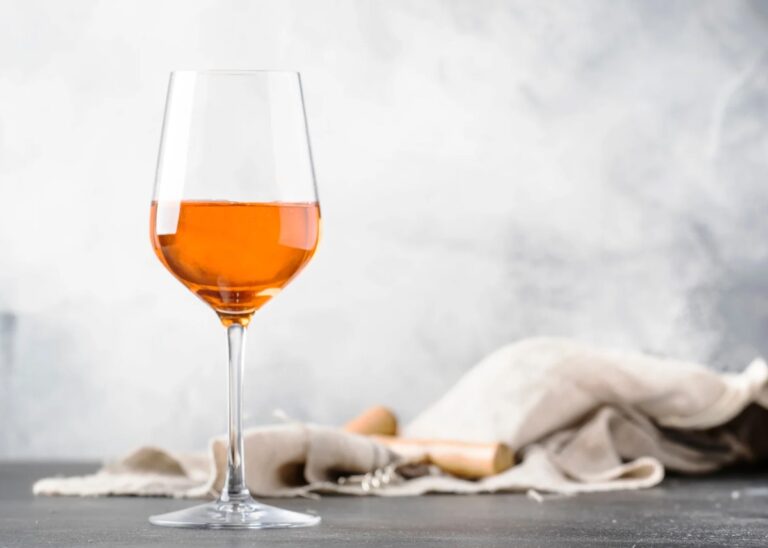[et_pb_section fb_built=”1″ _builder_version=”4.11.1″ _module_preset=”default” global_colors_info=”{}”][et_pb_row _builder_version=”4.11.1″ _module_preset=”default” global_colors_info=”{}”][et_pb_column type=”4_4″ _builder_version=”4.11.1″ _module_preset=”default” global_colors_info=”{}”][et_pb_video src=”https://youtu.be/ioMGxdG05JU” _builder_version=”4.11.1″ _module_preset=”default” global_colors_info=”{}”][/et_pb_video][et_pb_text _builder_version=”4.11.1″ _module_preset=”default” hover_enabled=”0″ global_colors_info=”{}” sticky_enabled=”0″]
Transcript
Taste Test: Wine Aerator
Hello, bonjour, and welcome to your new Bonner Private Wines video. Today I want to test out a little wine accessory that you may have come across if you are into wine (and I’m pretty sure you are a little bit). This is a little gadget that is supposed to aerate your wine really quickly as you pour, just as you pour out your wine into your glass aerate it very thoroughly and make it better in preventing you, saving you, the time of decanting or uncorking the bottle of wine like an hour prior to serving, which is one thing that I often advise you to do here, just to aerate and open up, free up, all the aromas of your wine. So today I have one example; they come in different brands.
You would have come across a wine aerator, somebody trying to sell you this accessory, telling you all the benefits that it has, how much better your wine is supposed to be when you use one of those. They are advertising in wine magazines. Wine shops have them and they try to sell them to you as well.
Do they actually work? So what I’m going to do is I’m going to take one single bottle of wine, pour myself a glass of wine without the aerator and another one using the aerator and see if I can smell, taste any difference and see if this little wine aerator actually works.
So let’s get on with it. One single bottle of wine. So it’s perfectly scientific, very precise, the exact same wine. See if I can taste or smell any difference in this little experiment. For a little fun here, I’m going to use a bit of an unusual wine opener that I haven’t used in a while. It’s an air pump wine— uh, cork extractor. So what you do is you push the needle all the way through the cork and then you start pumping. Hopefully that works well enough. It doesn’t seem to be doing what it’s supposed to be doing. Well, yeah. No, it is. So you pump. You pump, you pump. In a certain point, the pressure is supposed to build up.
Here you go. Well, that’s not the best wine accessory I’ve used, but it actually works. You need a bit of time, and then you do it. That’s. Yeah, Let’s leave that one aside for now.
This is a red wine from the south of France. This is a big red wine. A lot of red wine in particular benefit from a bit of aeration prior to opening, especially when they contain grapes like syrah, which is a grape that needs a lot of air to really open up and bloom in terms of aromatic profile.
So I believe this type of wine that is big, that has a lot of body and a lot of tannins, a lot of antioxidants, is typically the kind of wine that can benefit from a lot of aeration. So this is my reference glass without using the aerator. Now, the way an aerator work— works is that you put it on top of your bottle of wine and you pour yourself a glass.
This one is called the Vinturi. This is a reference to Venturi, which is the shape that is going to suck in a lot of oxygen. Vin being French for wine, turi, Vinturi, I don’t know whether that makes sense or not, and let’s see how that works and you can hear that it’s sucking in a lot of air and it is making a lot of bubbles in my glass as well.
So my wine is now thoroughly, in principle, aerated, thanks to this wine aerator. I’m going to leave those two glasses settle for a few seconds, a minute or so.
In the meantime, let me tell you what happens and why wine needs or benefits from aeratIon. Wine has a lot of antioxidants. It’s got a lot of tannins, and when it’s trapped inside the bottle, well, it gets a bit shy. It gets a bit introverted chemically.
Once you introduce back oxygen into your wine, the sort of shape or the molecular composition of all the aromas, the tannins change because of the oxygen that is quite aggressive and that reacts very quickly, very thoroughly with the aromas and all the good stuff that is in your wine. And it allows all of those aromas that we’re smelling a bit dusty, a bit shy, a bit introvert, a bit like bitumen, a bit like sulfur compounds, all those are aromas that tend to smell bad when they’re trapped in the bottle, well, they open up or the bad smelling aromas fade down, fade out, and it allows all the fruity stuff, all the spicy stuff to be expressed better.
Yes, wine is not very happy standing, staying here in a bottle of wine for months and months and months.
It only blooms once you bring back to life aerating it. So this is why we recommend decanting wines very often, especially big reds, especially all reds. And this is why on principle a wine aerator should work and help you have this liberation of your wine a lot faster. But let’s find out. I’m going to start smelling first those two wines.
This is my reference wine. Don’t forget to swirl your wine a little bit just to expose your glass, concentrate all the aromas inside your glass, and then you sniff. Yeah, this is a wine… I’m getting quite a lot of smoky characters here. I’m getting quite a lot of dusty aromas, indeed, a little bit of dark cherry here, but it smells a bit like bitumen.
You know what you lay down on roads, tar is the word that I’m looking for; it is quite tarry. It is quite introvert. A bit of oaky flavors here, but not very expressed very thoroughly. I’m only smelling a little bit of dark cherry, a little bit of blackcurrant, blackberry, but it’s not all that impressive to smell it. Let’s see if this one is any better.
Yeah, it’s not a huge difference. I wouldn’t say… Yes. Maybe. Maybe I can see the aromas tend to jump out of the glass a little bit more here. This this one is a lot shyer. Actually. I’m getting more of the vanilla and more of the tar elements here where this one is already a little bit more spiced up, getting more black pepper — from the syrah, remember.
The cherry is a little bit more alive and lively straight away. So there is a slight difference to the nose. It’s not huge, but it’s just a touch of difference. Let’s taste. See if the flavor has anything different. So that’s a big spicy red. The fruit is not all that powerful in here. It’s very tiring. It’s quite dusty, to be honest.
So fairly affordable wine from the south of France. I think the affordable wines are probably the ones that benefit the most for this type of experiment and wine aeration. Let’s see if it tastes any different. Yes, I would say this one is straight away a lot more open. Indeed. I can, I can definitely taste that. The cherry, all the fruit, all the spices.
As I was saying, there’s less of those dusty, tarry elements here. It’s straight away a lot more open, a lot more telling, a lot more extrovert to start with.
I’m not personally hugely convinced about those wine aerators. I think all the advertising, those companies that make them are quite pushy and they tell you how it’s going to transform your wine tasting experience and how any wine is going to become so much better using a wine aerator. I’ve always been a bit skeptical of those, but the proof is there.
They do aerate your wine quite thoroughly a lot faster rather than decanting your wine, rather than letting your wine sit in your wine glass for like half an hour before it starts really blooming. You’re saving yourself a little bit of time, especially on those big introvert, powerful, full bodied reds.
It saves a bit of time using one of those. It’s actually helps you pour the wine a little bit better as well. It’s a talking point in your wine tasting discussions as well. So convinced, halfway convinced I am, yes. Wine aerators do work to a certain extent. They’re not going to completely change your wine or your tasting experience, but they are going to save you a bit of time.
And if you don’t have a lot of time while you’re pouring your guests, and you want your wine to be ready straight away, well, it is actually a good wine accessory to have on hand. This was your video for today, and thanks for watching, and I will see you soon in the wonderful world of wine. Cheers.
[/et_pb_text][/et_pb_column][/et_pb_row][/et_pb_section]



